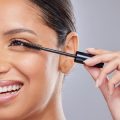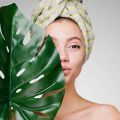Introduction: How Social Media Has Transformed Beauty Reviews
The beauty industry in the United States has undergone a radical transformation, thanks to the explosive growth of social media platforms like YouTube and TikTok. Gone are the days when makeup reviews were limited to glossy magazine pages or static blog posts. Today, real-time reaction videos and interactive content from beauty gurus drive trends and purchasing decisions. These platforms have democratized beauty opinions, giving everyday users a voice alongside established experts. The dynamic nature of video content allows for immediate demonstrations, honest first impressions, and instant feedback from followers. As American audiences crave authenticity and relatability, creators leverage live reactions and open discussions to foster a sense of community. This shift from traditional, one-way reviews to engaging, two-way conversations has redefined how beauty products are evaluated, recommended, and ultimately embraced across the country.
2. Understanding Reaction Videos: Authenticity Over Perfection
Reaction videos have become a major trend in the American beauty review culture, shifting the focus from highly-edited, scripted content to authentic, real-time responses. This format resonates strongly with U.S. audiences who crave genuine emotion and spontaneous opinions over perfection. Unlike traditional makeup reviews that often showcase flawless lighting and rehearsed commentary, reaction videos capture unscripted first impressions—whether it’s surprise, delight, or disappointment—making viewers feel like they’re part of an honest conversation rather than watching an infomercial.
Why Do Americans Prefer Reaction Videos?
The appeal lies in relatability. When beauty gurus react on camera to new products or viral makeup trends, their candid expressions and unfiltered thoughts create a sense of trust. American viewers are increasingly skeptical of overly polished influencer marketing; they value transparency and authenticity. Reaction videos offer exactly that: the chance to see someone experience a product just as a regular consumer would.
Authenticity vs. Perfection: Key Differences
| Aspect | Reaction Videos | Polished Reviews |
|---|---|---|
| Editing Style | Minimal editing, real-time reactions | Heavily edited, scripted segments |
| Tone | Candid, conversational | Formal, professional |
| Viewer Engagement | High engagement through relatability and comments | Moderate engagement, less interactive |
| Trust Factor | High – perceived as honest and unbiased | Moderate – may seem influenced or staged |
| Cultural Fit (U.S.) | Strong – matches values of openness and individuality | Weaker – may feel disconnected from average consumer experience |
The Takeaway for Creators and Brands
If you’re aiming to connect with American audiences in the beauty space, prioritizing authenticity is crucial. Audiences want to see real reactions, not just perfect outcomes. Incorporating reaction videos into your content strategy not only builds trust but also positions your channel as relatable—a key factor in today’s evolving landscape of makeup review culture.
![]()
3. The Rise of Beauty Gurus and Influencer Culture
American beauty gurus have fundamentally reshaped how makeup trends emerge, gain traction, and become part of mainstream culture. Gone are the days when beauty standards were dictated solely by magazine editors or high-fashion runways. Today, influencers on YouTube, TikTok, and Instagram wield immense power over what products go viral and which looks become must-try favorites. By sharing their personal routines, product recommendations, and honest reactions—often in the format of lively reaction videos—these creators bridge the gap between brands and everyday consumers.
What sets American beauty gurus apart is their ability to set new standards while remaining accessible. Their content is a blend of expert advice and relatable storytelling, often peppered with humor, candid opinions, and cultural references that resonate with U.S. audiences. This authenticity has fostered a sense of trust that traditional advertising struggles to match. When viewers see someone like Jackie Aina or James Charles testing a foundation in real-time or reacting to viral makeup hacks, it feels genuine—their successes and failures are out in the open for all to see.
Moreover, beauty gurus aren’t just trendsetters—they’re community builders. Through interactive Q&As, live streams, and comment sections buzzing with activity, these influencers cultivate loyal followings who feel seen and heard. In this new era of makeup review culture, American creators dont just showcase products; they create spaces where followers can ask questions, share experiences, and find guidance tailored to their unique needs. This participatory model has helped democratize beauty standards across the U.S., making them more inclusive and diverse than ever before.
4. The Impact of User Engagement and Viral Trends
In the fast-paced world of beauty reviews, user engagement is a driving force behind which makeup products soar to viral status and which brands dominate social media conversations. The interactive features of platforms like YouTube, TikTok, and Instagram—especially likes, shares, and comments—are not just vanity metrics; they play a pivotal role in shaping the narrative around beauty products and influencing consumer behavior.
The Mechanics of Virality in Makeup Reviews
When a beauty guru or reaction video creator showcases a new product, their audience doesn’t just passively watch—they engage. Each like, share, and comment acts as a signal to platform algorithms that this content is valuable, prompting further promotion and visibility. As more users interact with the content, the chances of it appearing on trending pages or “For You” feeds increase exponentially. This snowball effect can turn a previously unknown indie product into an overnight sensation.
User Influence: Shaping Brand Success
Viewers are no longer just consumers; they are active participants who influence which products become must-haves. Their comments often spark further discussion, create community-driven hype, or even prompt creators to revisit or address specific products. Below is a table illustrating how different forms of engagement contribute to product virality:
| Engagement Type | Effect on Product Visibility | Brand/Creator Response |
|---|---|---|
| Likes | Boosts algorithmic ranking; increases reach | Encourages creators to feature similar products |
| Shares | Introduces content to new audiences; multiplies exposure | Sparks collaboration between brands and influencers |
| Comments | Drives conversation; signals high interest to algorithms | Influences future content direction and brand focus |
The Democratization of Makeup Trends
This level of interaction democratizes the makeup industry. No longer do only big-budget brands set trends; now, any product with enough authentic engagement can capture the spotlight. It’s common for viewers to rally behind underdog brands or call out overhyped products, directly impacting what goes viral next.
The Takeaway for Brands and Creators
For both beauty gurus and makeup brands operating in the U.S., understanding the power of user engagement isn’t optional—it’s essential. Encouraging genuine interaction by asking questions, responding to comments, or running share-based giveaways can help content break through the noise and take center stage in American beauty culture.
5. Challenges: Navigating Sponsorships, Hype, and Authenticity
In the world of American beauty content, the relationship between influencers and brands has become increasingly complex. As reaction videos and beauty gurus gain influence over purchasing decisions, they are often approached by cosmetics companies eager to tap into their loyal audiences. While sponsorships can offer creators valuable opportunities, they also introduce a set of challenges that directly impact the trustworthiness of their content.
The Pressure of Paid Promotions
U.S. viewers are notably savvy when it comes to spotting #ad or #sponsored tags on social media posts. Many consumers have grown skeptical, questioning whether influencers genuinely love a product or are simply being paid to say so. This skepticism puts immense pressure on creators to maintain transparency without alienating brand partners or their subscribers. Its a delicate balancing act—one that requires careful communication and clear disclosures to avoid backlash.
Maintaining Credibility Amid Hype
With new product launches flooding the market each week, hype cycles can quickly overshadow honest reviews. Beauty gurus and reaction video creators must decide whether to jump on trending products for views or hold out for more thorough testing. For American audiences who value “real talk” and authenticity, it’s easy to spot when an influencer is just riding the wave versus giving a genuine opinion. The most respected creators make it a point to show both pros and cons—even if it means risking future collaborations with brands.
Strategies for Authentic Recommendations
To earn and keep viewer trust, leading U.S.-based beauty influencers employ several key strategies: transparent disclosure of partnerships, clear separation between sponsored and unsponsored content, and open discussions about their selection process for brand deals. Some even refuse certain sponsorships altogether if the product doesn’t align with their personal standards. By prioritizing honest feedback over short-term gains, these influencers ensure that their recommendations resonate with an audience that values credibility above all else.
6. Community-Building: From Followers to Friends
One of the most significant shifts in the new era of makeup review culture is how American beauty influencers are transforming their audiences from passive followers into active, engaged communities. This evolution is fueled by interactive content—especially Q&A sessions, live streams, and challenge videos—which creates a two-way dialogue that goes far beyond traditional makeup tutorials.
The Power of Q&A Sessions
Q&A sessions are now a staple for top beauty gurus in the U.S. Unlike pre-recorded reviews, these real-time interactions allow influencers to respond directly to fan questions about everything from product recommendations to personal makeup struggles. By offering honest, unfiltered answers, creators not only demonstrate expertise but also build trust—a critical factor in American influencer culture where authenticity reigns supreme.
Live Streams: Real-Time Connection
Live streaming on platforms like YouTube Live, Instagram Live, and TikTok has revolutionized how beauty content is consumed and experienced. During these sessions, influencers might test out new makeup launches, react to trending beauty hacks, or even invite viewers to vote on which products to try next. The immediate feedback loop makes fans feel seen and valued, turning casual viewers into loyal community members who tune in for both entertainment and education.
Challenge Videos: Collaboration Over Competition
Challenge videos have become a uniquely American phenomenon in the beauty space. Whether it’s a “$20 Drugstore Makeup Challenge” or “Boyfriend Does My Makeup,” these lighthearted formats encourage participation—not just from fellow creators but also from everyday fans. Influencers often urge their audience to recreate looks or submit their own takes using branded hashtags, fostering a sense of belonging and shared creativity.
This interactive approach doesn’t just grow follower counts—it deepens relationships. Fans are no longer just numbers; they’re contributors to the conversation and co-creators in the influencer’s journey. By leveraging interactive content, American beauty gurus have redefined what it means to be an online community—making followers feel less like spectators and more like friends.
7. Conclusion: What’s Next for American Makeup Review Culture?
The landscape of makeup review culture in America is on the cusp of another transformation. As reaction videos and beauty gurus continue to dominate the digital space, several emerging trends are poised to redefine how consumers discover, evaluate, and purchase beauty products.
AI-Driven Reviews: The Rise of Smart Recommendations
Artificial intelligence is becoming an integral part of the beauty community. Expect to see AI-powered platforms that analyze thousands of reviews and social media reactions, providing users with highly personalized product suggestions. These systems will be able to highlight authentic feedback, filter out sponsored content, and even predict which products a user might love based on their preferences and previous interactions. This shift will make makeup recommendations more data-driven and efficient than ever before.
Virtual Try-Ons: Testing Before Buying Goes Mainstream
Virtual try-on technology is set to become a standard feature across e-commerce and social platforms. Consumers will use augmented reality (AR) filters not just for fun, but as a practical tool to test makeup shades and textures in real time. American brands are already investing heavily in these tools, aiming to bridge the gap between online shopping and in-store experiences. As this tech becomes more sophisticated, it will empower buyers to make informed decisions without ever leaving home.
The Evolving Role of Transparency in Influencer Marketing
The demand for transparency in influencer marketing is reaching new heights. With audiences growing savvier about paid partnerships and sponsorships, authenticity has never been more valuable. Future beauty gurus who thrive will be those who prioritize clear disclosures and honest reviews, even when working with major brands. Regulatory bodies like the FTC are also stepping up oversight, meaning full transparency won’t just be good practice—it’ll be required by law.
Final Thoughts
The new era of American makeup review culture will be defined by innovation and integrity. AI-driven insights, immersive virtual try-ons, and a culture of transparency are not just trends—they’re becoming baseline expectations for consumers. As the industry evolves, both creators and brands must adapt quickly to stay relevant in this fast-paced digital landscape.


